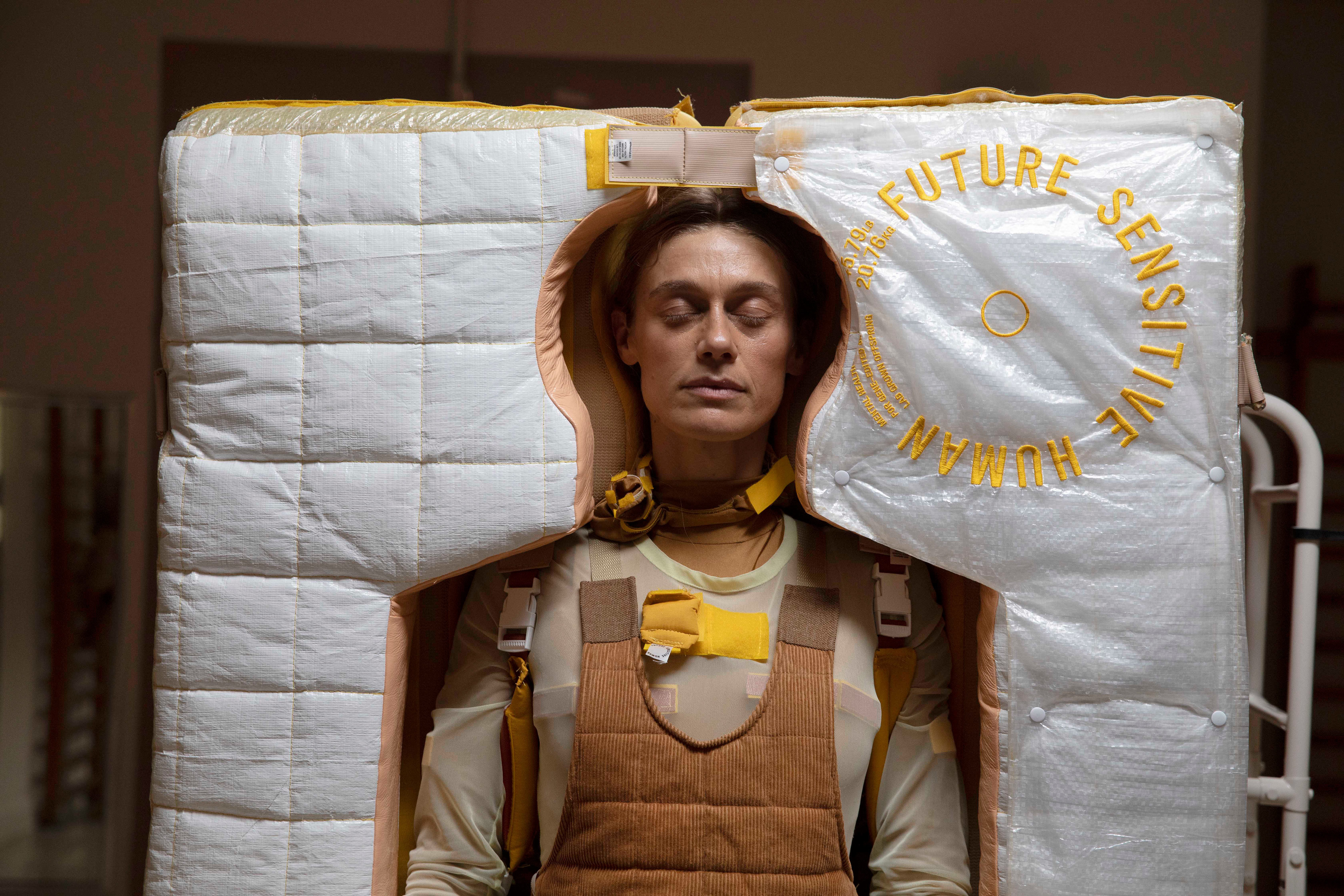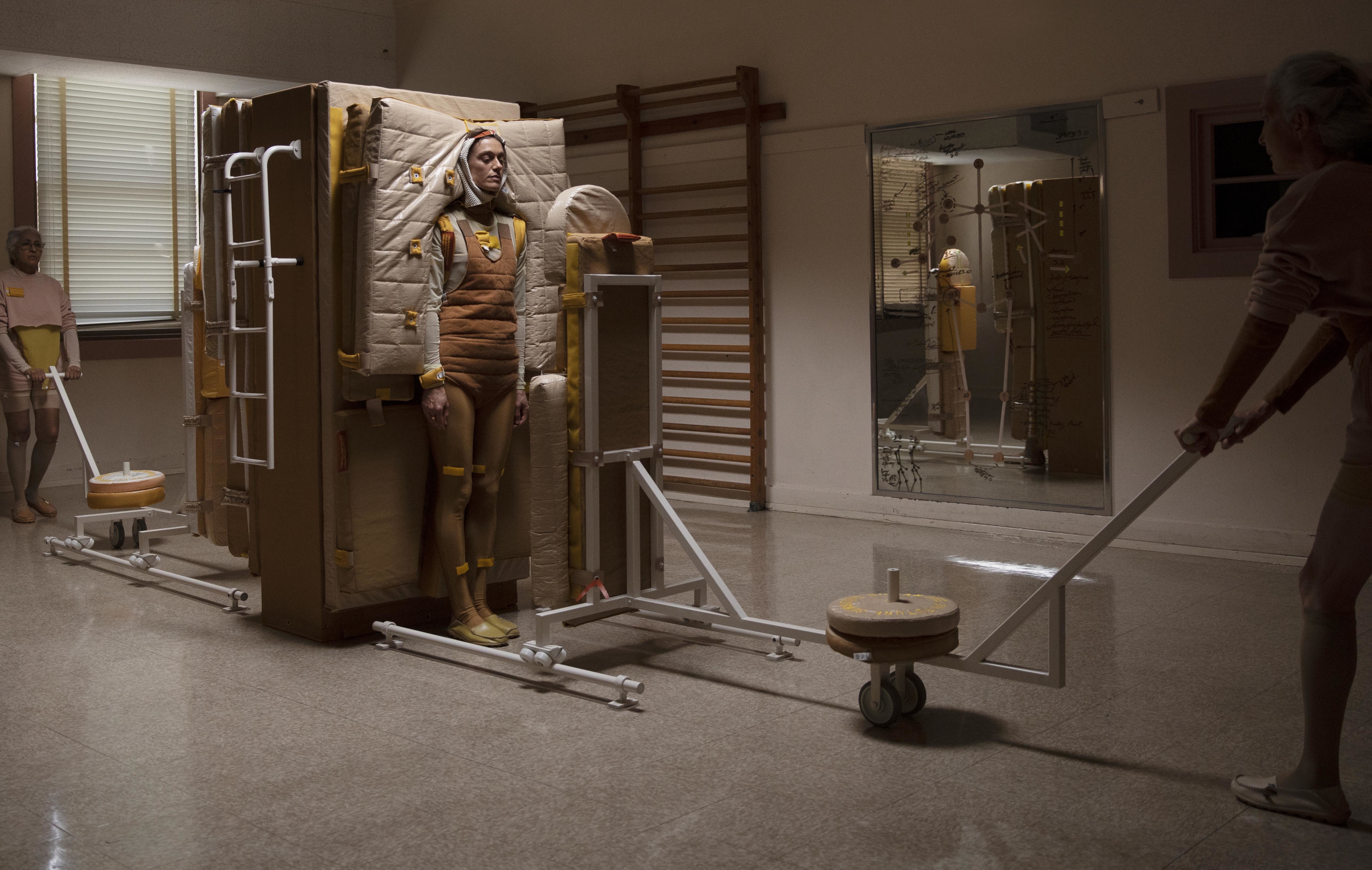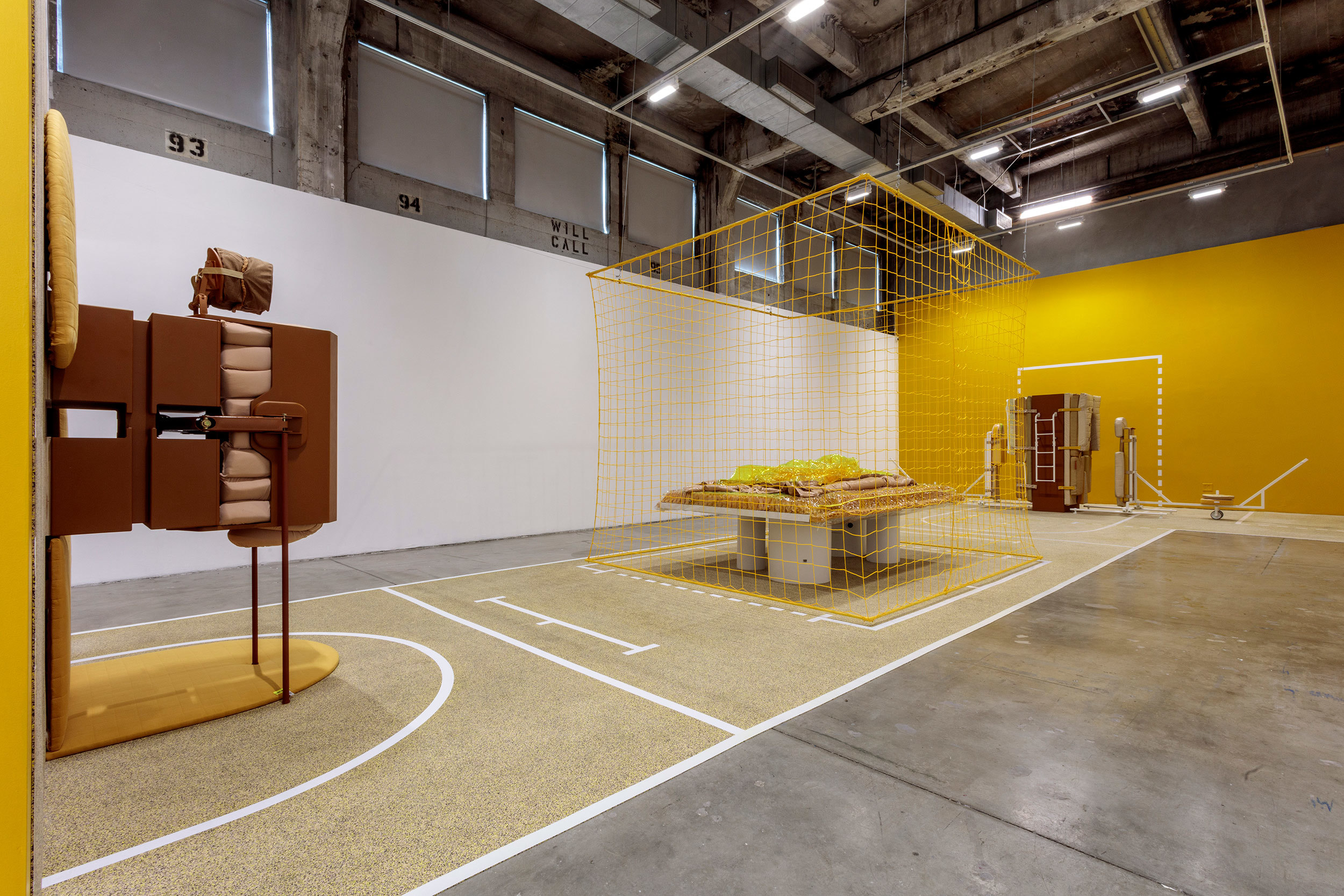The Southern California Institute Of Architecture issued the following announcement on Mar. 11.
“Scientists are accelerating ways to direct our evolutionary path––powerful genetic engineering tools, such as CRISPR technology, could fundamentally redesign our species. Be it gene-edited babies or kids grown in artificial wombs, playing with the very building blocks of life creates terror and inspiration, in equal measure,” reads the official description for Lucy McRae’s recent exhibition, FUTUREKIN.
McRae’s work in the exhibition, which opened last month in the SCI-Arc gallery, utilizes the idea of genetic engineering to reimagine an athletic court as analogous to a sort of “reproductive landscape,” within which live three mental health machines designed to compensate for a lack of human touch in early life. Pointing to a future where childbirth is questioned, McRae considers the new products and methods of care that are traded and handed down, a speculation that “anticipates ‘future-kids’ develop unfamiliar, neurobiological quirks, through a lack of fetal programming that normally takes place in the womb.”
FUTUREKIN is set in a post-CRISPR world, where human children are brought to term and grown in wombs in a lab. This future may not be as distant as originally thought, according to a short film published by the BBC last week on complex new developments in gestational science, suggesting the realistic feasibility of growing humans inside synthetic wombs. In other words, the parallels McRae draws in FUTUREKIN may be a near-future truth stranger than science fiction.
Ethical questions, in addition to excitement, swirl around the swath of possibilities regarding new scientific norms implied by these scientific developments—about motherhood, bodily autonomy, gender roles, and reproductive choice for women.
“We are going to be capable of creating an external womb within a generation or two, and we all are going to have a completely different reaction to what it means for us and for our lives,” claims Helen Sedgwick, author of The Growing Season, in the BBC film.
“It can be life changing for people who wouldn't otherwise be able to have a child in all sorts of ways, but there are also some huge questions,” she continues. “If technology replaces traditional pregnancy and childbirth, then who owns that technology? Who controls its use? Who is it going to be for? Is there something that could be forced on people?”
Shares McRae of these looming dilemmas: “I am curious about the human consequences of bypassing the womb and that first hug of a ‘mother.’ FUTUREKIN questions whether these kids will find new ways for intimacy and togetherness. More broadly, I want to connect the public with science at street level, where art is no longer a vessel but connected to the bulk of science and tech––cracking open debate around how God-like technologies, such as CRISPR will change what makes us human forevermore."
FUTUREKIN runs through April 13 in the SCI-Arc Gallery.
Original source can be found here.



Source: The Southern California Institute Of Architecture






 Alerts Sign-up
Alerts Sign-up